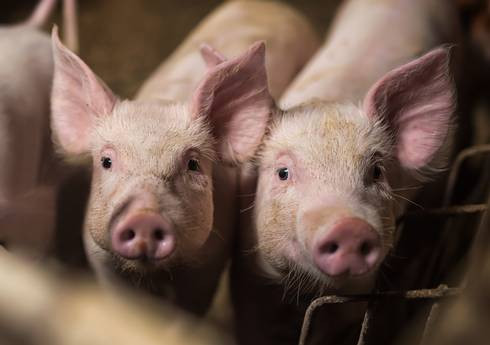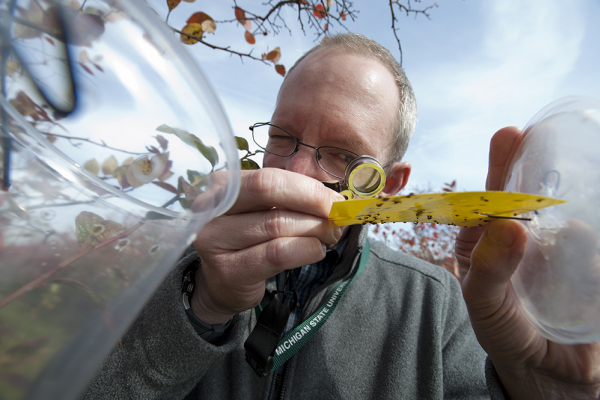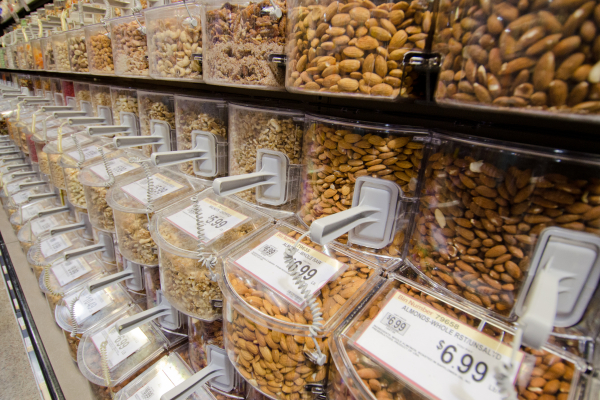Improving Genetic Selection May Hold Key to Peaceful Pig Grouping

Growing concern over the welfare of agricultural animals has led many states to pass legislation that mandates a fresh set of care practices. California did so in 2008, and many others have followed suit.
In 2009, the Michigan Legislature passed an amendment to the Animal Industry Act introducing a series of new standards for gestating sows, laying hens and veal calves. Included is the requirement of additional living space for gestating sows. By April 1, 2020, all producers will need to house pregnant pigs in stalls where they can turn about freely, something typically not found in most current operations.
The majority of agricultural producers don’t have the physical capacity to give each sow an individual pen. And though pigs are social by nature, they don’t always get along well in group settings. Researchers at Michigan State University (MSU) and Scotland’s Rural College are looking for ways to place pigs so they are more likely to live in harmony together. The basis for the solution may be rooted in genetics.
“Being cognizant of how we treat animals is a great thing, and the new standards sound really good in principle,” said Janice Siegford, an MSU associate professor of animal science who’s working on the five-year project. “But pigs are currently being selected for breeding with no respect to how they perform in social situations. There’s a lot of evolutionary history that says it’s best if the animals know each other and are raised together, but that’s not often what is done in practice.”
Pigs naturally live in small groups that consist of their mothers and other close relatives. There is a social hierarchy within these groups, which normally works to reduce aggression and fights because they know the social order. When unrelated pigs are mixed in a shared space, fighting can become intense.
“Unfamiliar pigs oftentimes fight like the dickens when they are put in the same pen,” Siegford said. “This becomes problematic for a number of reasons. Obviously, the animals’ welfare is adversely affected. And injured or stressed pigs don’t perform as well, and they can even die from exhaustion or heat stress.”
Breeding programs have traditionally focused on production traits and other relatively easy-to-measure physical characteristics, such as number of offspring, growth rate and depth of back fat. Though it’s sometimes difficult to quantify, Siegford said that behavior should also be taken into consideration.
Siegford and the rest of the project team — which includes MSU faculty members Juan Pedro Steibel, Cathy Ernst, Ron Bates, Madonna Gemus-Benjamin and Sarah Ison, as well as graduate and undergraduate students — are examining the heritability of social behavior using genetic selection. They are characterizing social interactions, relating those behaviors to health and productivity, and identifying the genetic components that factor into certain behaviors. They hope that the work will help to answer a critical question:
Can pigs be selected for heritable behavioral traits that lessen the severity of conflict among grouped animals?
The MSU team is compiling behavioral and genomic data from more than 1,000 pigs at the MSU Swine Teaching and Research Center. The data will be combined with information from 3,000 pigs obtained by collaborators Simon Turner and Rick D’Eath of Scotland’s Rural College, experts in analyzing aggression heritability in pigs.
Most previous research on heritability of aggressive behavior has been dedicated to the finishing stage of production when animals are being prepared for market. Siegford believes that monitoring interactions earlier could be useful.
“We’ve been studying behavior of the pigs beginning at the first time they are mixed in the nursery after weaning,” Siegford said. “If we can predict behavior at an early age, maybe we can manage those pigs better throughout their lives. We’re not just looking at fighting. We want to know about positive behaviors. Some pigs like to rest or feed with certain pigs, and we want to know what behaviors they use toward preferred social partners. All of that is extremely important to understand when it comes to selecting pigs for breeding that best fit the social environment we keep them in.”
Ison, a research associate, is surveying producers and breeding companies to determine how they manage their pigs and if they take social behavior into account during the breeding selection process. Early findings have shown that many producers receive information on behavior from their swine veterinarians.
This knowledge offers insight into the best way for the team to share research findings for maximum exposure and impact. Siegford said she wants to help ensure the sustainability of Michigan’s pork industry, valued at $500 million.
“These changes to animal care standards have been made for positive reasons,” Siegford said. “The idea of giving animals more space is wonderful, but when you allow for more behavioral expression, pigs will perform both good and bad behaviors. We need to make sure that we’re giving producers information so they can meet legislative and consumer requirements in the right way for the pigs, and in a way that makes sense economically.”
Funding for this project has been provided by the U.S. Department of Agriculture, the National Pork Board and the Rackham Foundation.
Reprinted from Michigan State University AgBio Research 2017 Annual Report


